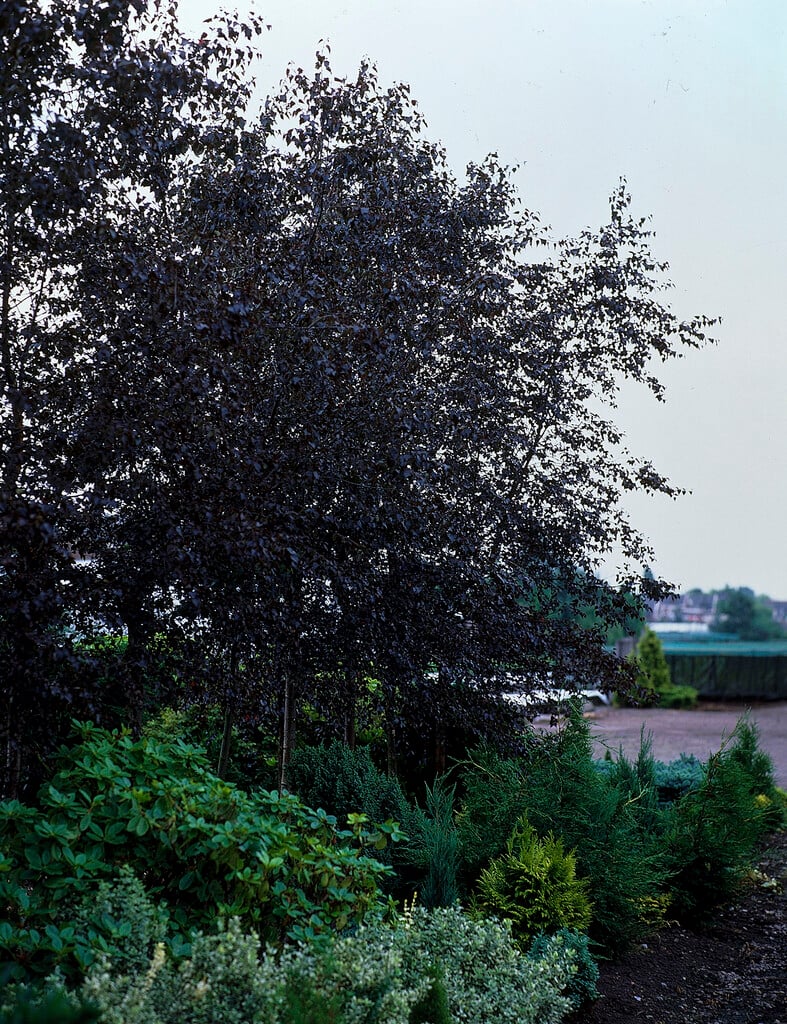Betula pendula subsp. pendula 'Purpurea'
purple-leaf birch
Slow-growing deciduous tree of open habit, eventually reaching about 10m in height. Bark purple-tinged white, becoming black and rugged at base. Leaves in spring are dark purple to dark-red, turning greenish purple in summer and finally purple-bronze in autumn
Size
Ultimate height
Higher than 12 metresTime to ultimate height
20–50 yearsUltimate spread
Wider than 8 metresGrowing conditions
Moisture
Moist but well–drained, Well–drainedpH
Neutral, Acid, AlkalineColour & scent
| Stem | Flower | Foliage | Fruit | |
| Spring | Purple Red | |||
|---|---|---|---|---|
| Summer | Purple Green | |||
| Autumn | Purple Bronze | |||
| Winter |
Position
- Full sun
- Partial shade
Aspect
West–facing or South–facing or East–facing or North–facing
Exposure
Exposed or Sheltered Hardiness
H7Botanical details
- Family
- Betulaceae
- Native to GB / Ireland
- No
- Foliage
- Deciduous
- Habit
- Spreading branched
- Genus
Betula can be deciduous trees or shrubs, usually colouring well in autumn and often with striking white, pink, or peeling brown bark; separate male and female catkins open before or with the leaves in spring
- Name status
Accepted
How to grow
Cultivation
Will grow in wide range of situations. See tree cultivation for further advice
Propagation
Suggested planting locations and garden types
- Architectural
- Cottage and informal garden
- Wildlife gardens
Pruning
Pests
May be susceptible to birch borers, leaf-mining sawflies and aphids
Diseases
May be susceptible to honey fungus, a tree rust and powdery mildews
Love gardening
Sign up to receive regular gardening tips, inspiration, offers and more
View our Privacy Policy
Get involved
The Royal Horticultural Society is the UK’s leading gardening charity. We aim to enrich everyone’s life through plants, and make the UK a greener and more beautiful place.

